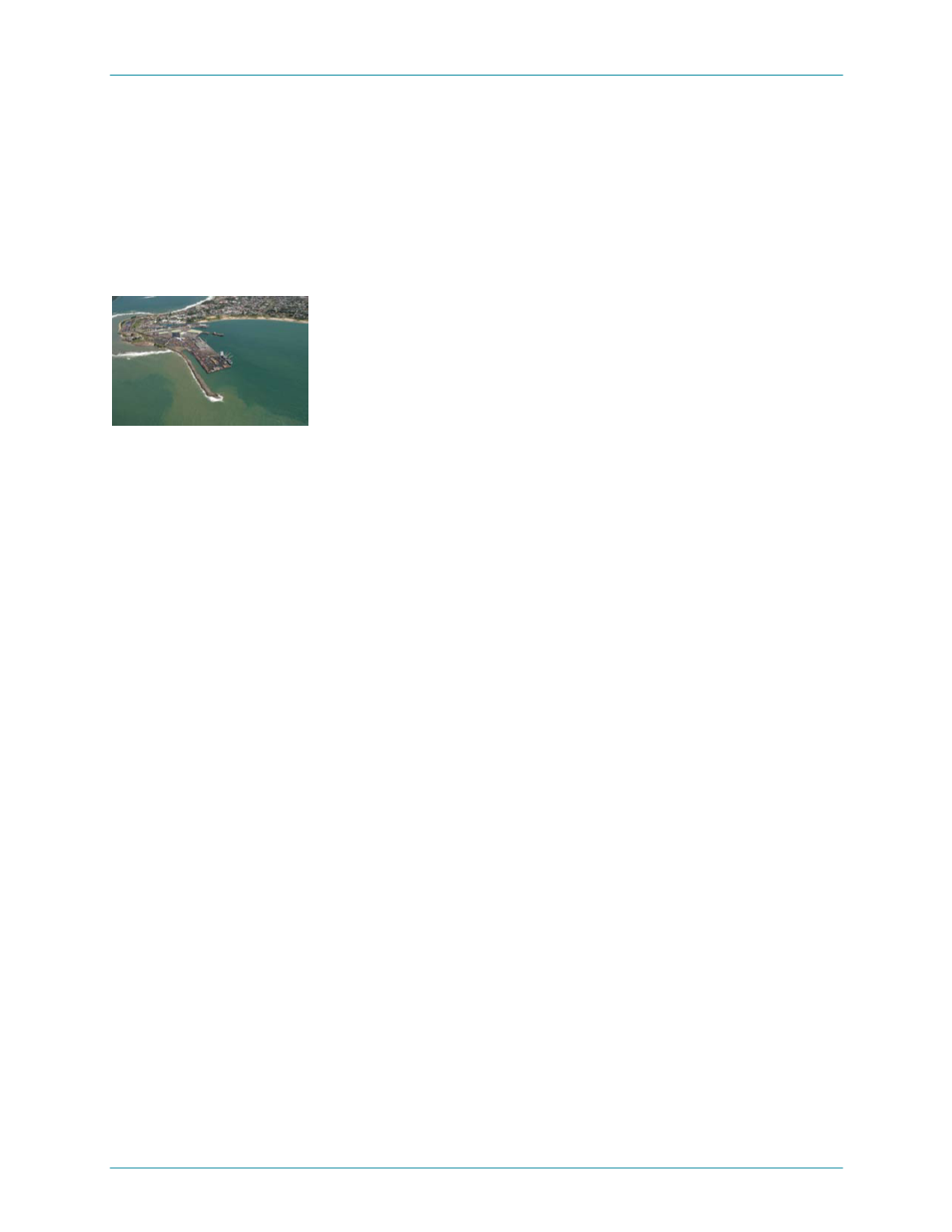
Summary
40 m. Due to these coral reefs and local sea movements, two coastal
extensions developed. Hastie Reef to the southeast of the port, assisted
with the formation of a land extension on which the port and old town
were constructed. Grand Recif helped form Tanio Point, upon which
Toamasina has expanded since 1981. Tanio Point and the north coast
have been impacted by erosion for almost a century, however this is
more of an issue now with the town’s expansion northward.
Moles A and B at the port are constructed on sandy zones within the
protection of Grand Recif, while Mole C is constructed on the edge of the
reef. Diving surveys have shown the seabed near the docks to be
covered by muddy sediments and solid wastes from port activities.
Recent studies of sediment quality in the harbour have confirmed
contamination from heavy metals and organic compounds associated
with anti-fouling paints, fuels, and zinc used for anticorrosion on metal
structures. The marine environment in the harbour is seriously
degraded, as are many major ports, with few free-swimming organisms
present.
Port of Toamasina
Outside the harbour, Toamasina Bay is up to 10 m deep, with a bed of
sand and clay sediments. The bay has limited species richness, likely
because of strong water movements coupled with large erosion and
sedimentation processes. Both Hastie and Grand Recif have been
transformed by the port, including being used to stock dredged material.
Project Description
Materials required by the project that are not available locally, especially
raw materials required during operations, will be purchased on
international markets and shipped to Madagascar. Studies showed that
due to the quantities involved, an expansion of the existing port will be
required. Several expansion alternatives within the port were compared,
as the three moles at the port each have their advantages and
limitations. Extension of Mole B was eventually chosen for the following
reasons:
•
the berth and its approach are deep enough to accept 30,000 to
40,000 dwt vessels without dredging;
•
berthing is sheltered; and
•
both sides of the mole may be used for berthing, thus increasing the
availability of the berth.
The extension will be about 250 m long and constructed on open pilings.
This construction type represents the lowest cost option and provides a
typical fit-for-purpose solution, which does not offer the option of
handling significant quantities of any other type of cargo. This option
also has the least potential for creating environmental problems with
minimal interference with existing water movement patterns within the
January 2006
Ambatovy Project — 45


